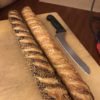This week, Rico had the tough assignment of eating freshly carved prime rib in Beverly Hills. (The struggle is real, folks.) But he did have a good reason: Prime rib, that staple cut of beef favored by many a mid-century restaurant, is enjoying a comeback. It’s been showing up on menus in trendy eateries in New York City and elsewhere.
So, to learn about prime rib, he went to the obvious L.A. spot: Lawry’s The Prime Rib. When they opened in the late 1930s, prime rib was the only entree on the menu, and they still serve it tableside from special carts. While he was visiting, Rico spoke with Executive Chef and fourth-generation employee Ryan Wilson, who kicked things off by explaining just what sets prime rib apart from other cuts.

Ryan Wilson: Most people think when eating a piece of meat, they’re thinking of a steak. They’re thinking of something that’ll hit a hot pan or a hot grill that gets that crust and that charbroiled flavor.
Prime rib, however, is a much bigger piece of meat. In our case, usually 16 to 18 pounds, that’s roasted whole and then carved afterward so you don’t have all that texture on the whole piece you just have it on the outside.
Rico Gagliano: So you kind of get the charbroiled crust just around the edge of the piece of meat instead of all sides of it. And the rest of it is, I think of it as more tender and kinda of more rare.
Ryan Wilson: Absolutely. Largely what we’re going after in prime rib is tenderness and mouth feel and we’re really going for that juicy succulence. Steak is gonna have much more aggressive flavors and textures and you put a lot of pepper and chilies and all sorts of different rubs on it. Prime rib is much more about the meat itself.
Rico Gagliano: How did it become such an important piece of meat? Fillet mignon is often spoken of as one of the king cuts of meat but prime rib, I can’t think of many pieces of meat that have a restaurant named after it.
Ryan Wilson: That’s a fabulous question and I think it has something to do with the simple anatomy of the meat with a big beautiful bone on it and it’s got a great tender actual muscle and it’s flavorful.
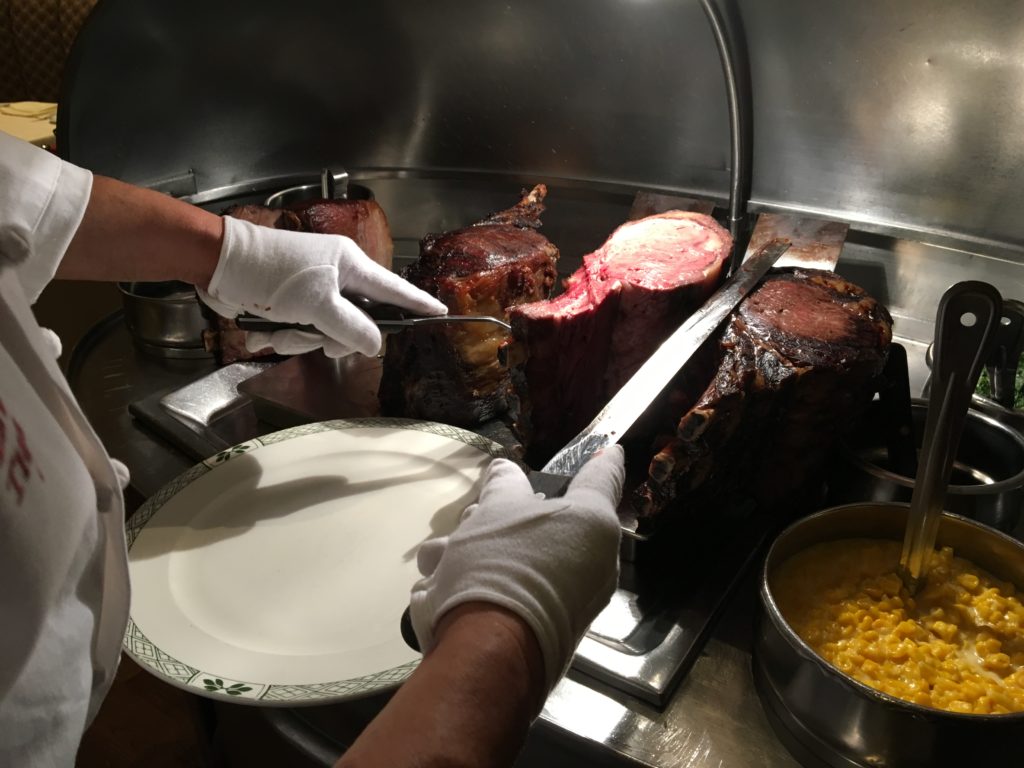
The fillet mignon has become popular more recently and I think it’s largely because of its lean component to it whereas in the past, in history, people wanted fattier, richer cuts of meat. Whereas the fillet mignon, it was still prized but not nearly as much as the prime rib and doesn’t have all the fat to it.
Rico Gagliano: The prime rib may have suffered from the health craze, maybe.
Ryan Wilson: It has without a doubt.
Rico Gagliano: But I feel like it’s back now. Why do you, what do you think has brought it back? Does now a trend to kind of rediscover the prime rib?
Ryan Wilson: Because I think we’re in a wonderful cycle of classics coming back. And I think people are recognizing the prime rib is so much more than just what you see on a bad Vegas buffet. Those classic dishes from the ’50s, ’60s, there was real value to them and let’s go back and cherish them again.
Rico Gagliano: Speaking of which, part of the reason people come here as well has much to do with the kind of classic presentation as it does with the meat cut. Sitting at the end of the end of this table right now is a giant, I guess it’s chrome or stainless steel cart. Tell me about it.
Ryan Wilson: So these are our what we call our silver carts. They are not silver. They are stainless steel.
Rico Gagliano: Aww.
Ryan Wilson: Yeah. We don’t have armed guards beside them. The design really hasn’t changed much since we opened in 1938. Heavily influenced by my great grandfather.
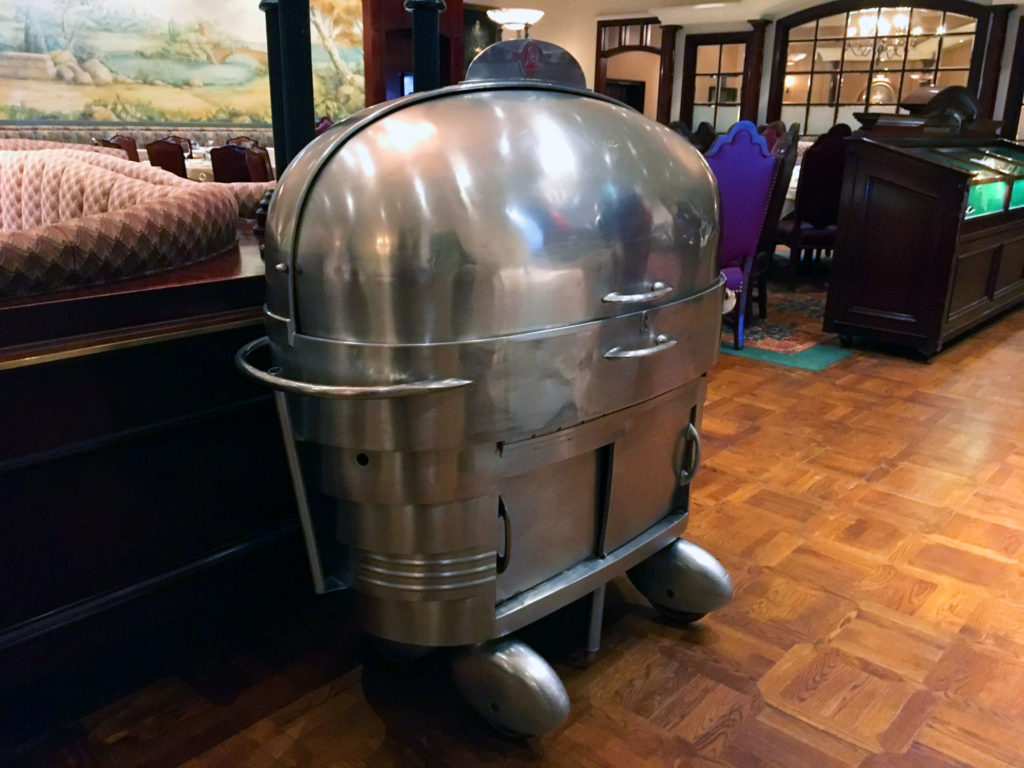
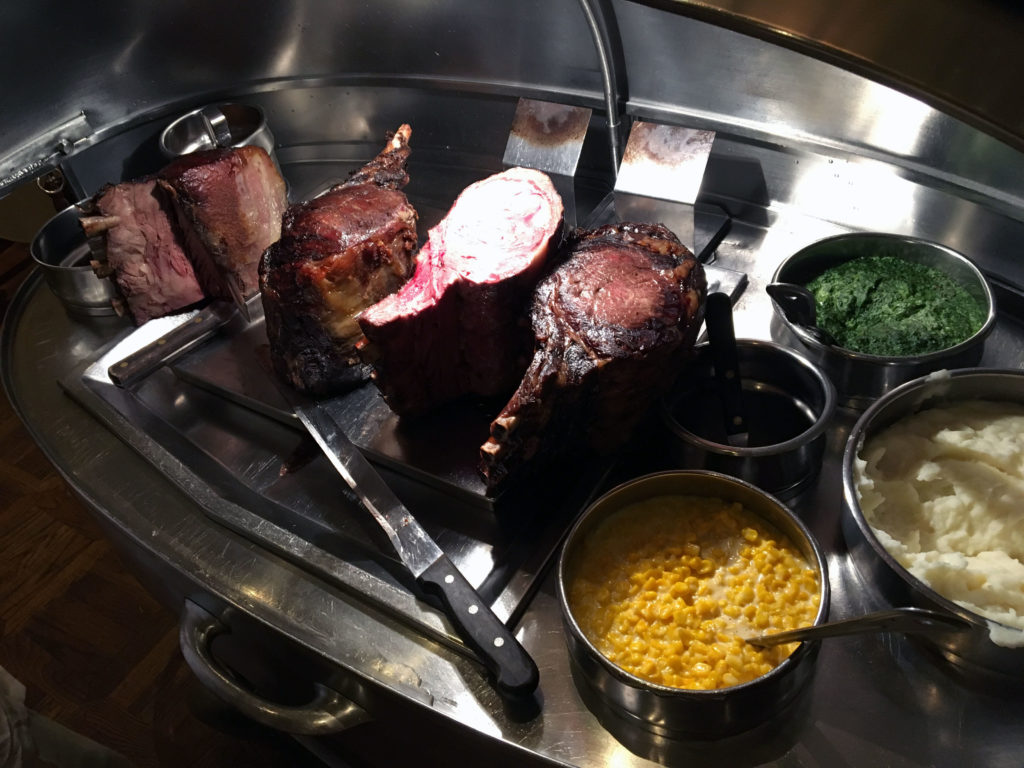
And the idea, in large part, was to be able to bring the kitchen to the table and part of that is that old time Sunday experience of watching, often times, dad carve the roast. Right? I mean that was part of the ceremony. He would stand at the end of the table with his carving knife and fork and he’d carve the roast.
Rico Gagliano: There’s a lot less of this done now. There was a time when table side service was quite a big deal in the mid-century. Now there are very few places that do it, why is that?
Ryan Wilson: Because it takes a lot of training, it takes a lot of experience, it takes a lot of investment. These are not inexpensive pieces of equipment. It’s, I would imagine, about 4 feet long. Probably stands close to 4 feet tall. Fully loaded, they weigh over 500 pounds.
Rico Gagliano: And it looks like it’s also got this kind of art deco/’50s custom hot rod look to it, it’s really cool.
Ryan Wilson: They’re incredible and they are very time-consuming to make. There are frankly only a handful of people left that can do this sort of metal work.
Rico Gagliano: Let’s see this in action because this thing is wheeled out by somebody who is specially trained is my understanding to do this job. Tell me about that.
Ryan Wilson: So our carvers have knowledge of all the recipes, they need to know how to make the mashed potatoes, the creamed corn, creamed spinach, yorkshire pudding. And then, obviously, how to handle the meat. And they have to have a table side service component, they need to be able to present to the guests and introduce themselves, talk to the guests about what beef we’re serving, the history of the restaurant.
Rico Gagliano: So, basically, they have to be able to be really good chefs but also be able to talk to people and I can tell you as a radio guy who interviews a lot of chefs, that’s hard to come by.
Ryan Wilson: Speaking as a chef myself, yes, you don’t often find that combination of tactical capability and willingness let alone passion around talking to people.
Rico Gagliano: Let’s see this happen. This is–
Gregorio: Gregorio.

Rico Gagliano: Gregorio, how long have you been doing this?
Gregorio: 28 years.
Rico Gagliano: 28 years?
Gregorio: Yep. ’89.
Rico Gagliano: I’ll ask you, what cut should I get, what’s your favorite cut from this cart?
Gregorio: That all depends [on] how hungry, you have. You can have Lawry’s cut, that’s a typical cut.
Rico Gagliano: How big is that, the Lawry’s cut?
Gregorio: That’s 9 to 10 ounces.
Rico Gagliano: OK, it’s the classic cut. I’ll take that and then I can bring some back to all of the jealous people back in the studio who can’t believe I got this assignment.
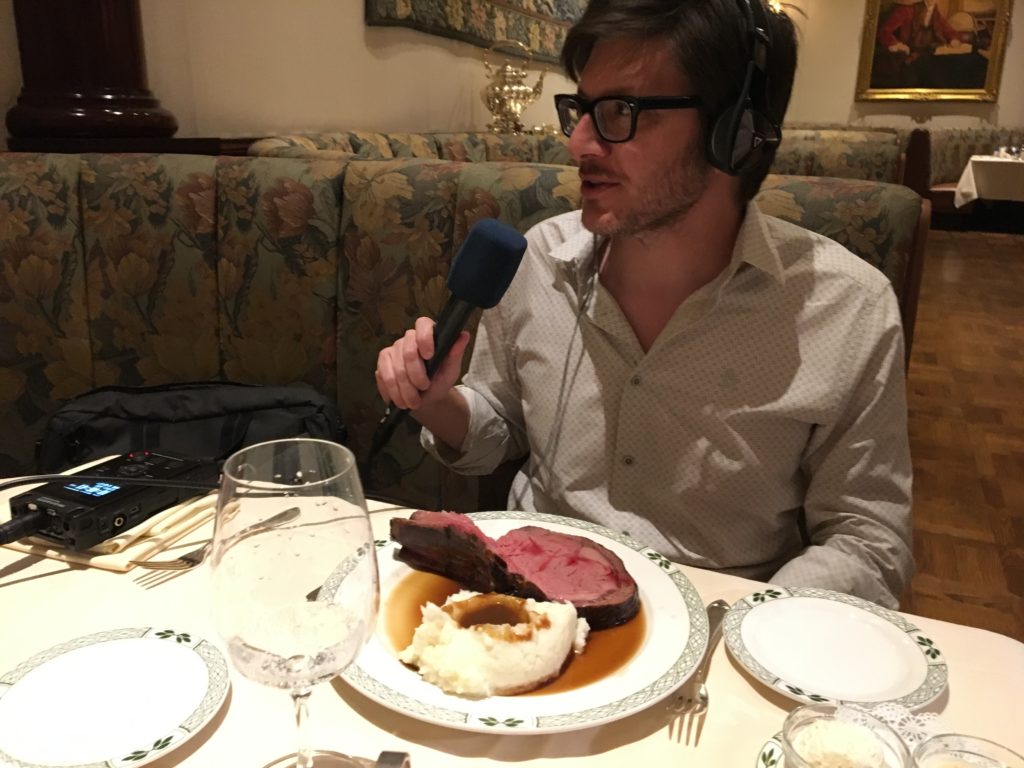
Oh my God, that is cutting like butter… and of course you’re putting mashed potatoes on there, you didn’t have to ask me if I wanted them because of course I did. And, let’s see.
Ryan Wilson: I would tell you to start next to the bone. I think that’s the probably one of the more tender sections and you’re going to get some great richness and flavor from the meat next to the bone.
Rico Gagliano: Here we go. That is ridiculous. There is something about the mouthfeel of it that makes it feel opulent.
Ryan Wilson: Emotionally I can’t pinpoint it, but you’re absolutely right. Certainly, pleasurable but you feel really satisfied.
Rico Gagliano: Oh I do feel though that I should ask one question for the vegetarians in the audience. I actually interviewed someone who was an expert in mid-century dining, and he said that this restaurant pioneered the idea of serving salad at the beginning of a meal.
It used to be served at the end. And the point was to show off that in California you could have fresh vegetables all year round. Is that true?
Ryan Wilson: I can’t make sure that it’s true but it’s definitely part of our lore. The other one that I think is important to mention that we also claim the first restaurant to offer a doggy bag because these are, these are big meals.

